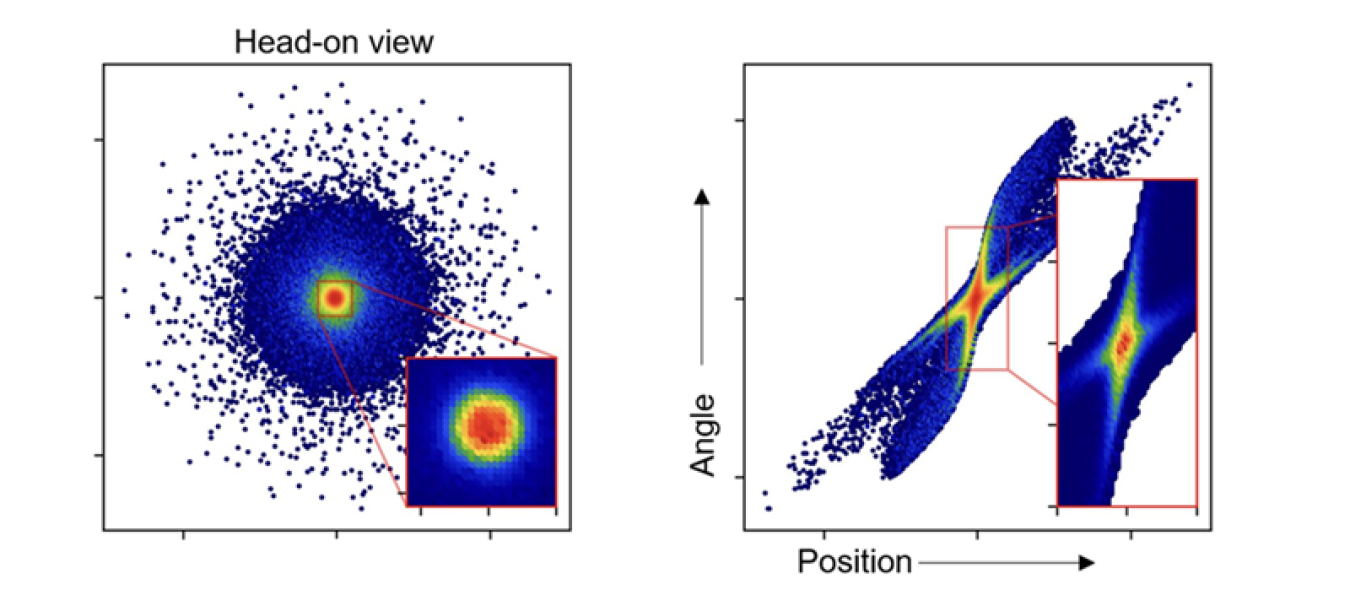The intra-beam repulsion that typically degrades electron beam quality can now be used to improve it
June 11, 2025The Science
Electron beams from particle accelerators are important for applications ranging from particle collisions for nuclear physics to X-ray production to cancer therapy. When at low energy, such as near the source of the electrons, these beams are hard to control. This is because electron repulsion forces among the electrons lead to distortions in the beams that can hurt the beams' quality. However, using detailed beam simulations, researchers have found a new way to harness these beam distortions to create a beam core with unprecedented density and quality.
The Impact
Nearly all applications of electron accelerators require beams with a high density of electrons. The unprecedented density predicted in this study could enable X-ray free electron lasers with much greater X-ray output, or significantly shorter wavelengths. This would enable these light sources to provide scientists with even more information on how atoms and molecules move than current X-ray free electron lasers. In addition, using this technique, new X-ray lasers could be constructed with much lower energy beams. This would dramatically shrink the accelerators’ size and cost. In the case of particle colliders, denser beams can lead to more particle collisions, and therefore greater potential for scientists to discover new particles or new forces of nature.
Summary
The mutual repulsion of electrons inside very intense electron beams in particle accelerators can lead to electron pileups at the edge of the beam. This pileup is like the edge of a wave that is on the verge of breaking. Under the right conditions, when this wave breaks, the researchers showed that this can lead to another, even stronger pileup in the beam core. The “wavebroken” portion of the beam then falls apart, forming a diffuse background beam that can be properly discarded, while the core of the beam retains its density and quality. The researchers call the unused portion “sacrificial,” as it exists only to improve the quality of the electrons in the beam center.
While the study is theoretical, the researchers emphasize that this technique could be tested at many of the accelerator facilities operated by the Department of Energy Office of Science's national laboratories.
Contact
Jared Maxson
Cornell University
jmm586@cornell.edu
Funding
This work was supported by the U.S. Department of Energy Office of Science, Office of Basic Energy Sciences and the National Science Foundation through the Center for Bright Beams.
Publications
Li, W.H., et al., Compensating slice emittance growth in high brightness photoinjectors using sacrificial charge. Physical Review Accelerators and Beams 27, 084401 (2024). [DOI:10.1103/PhysRevAccelBeams.27.084401]


